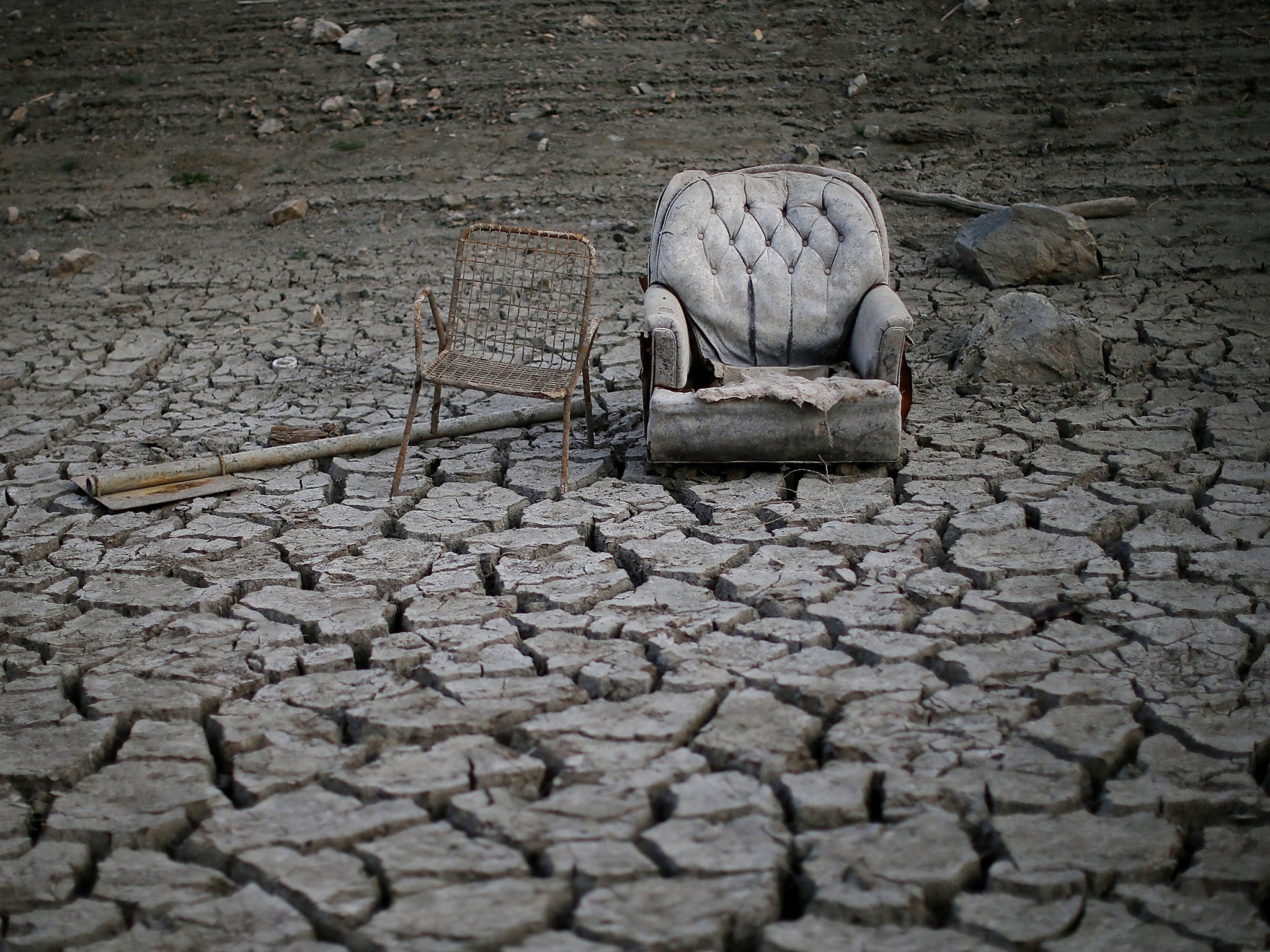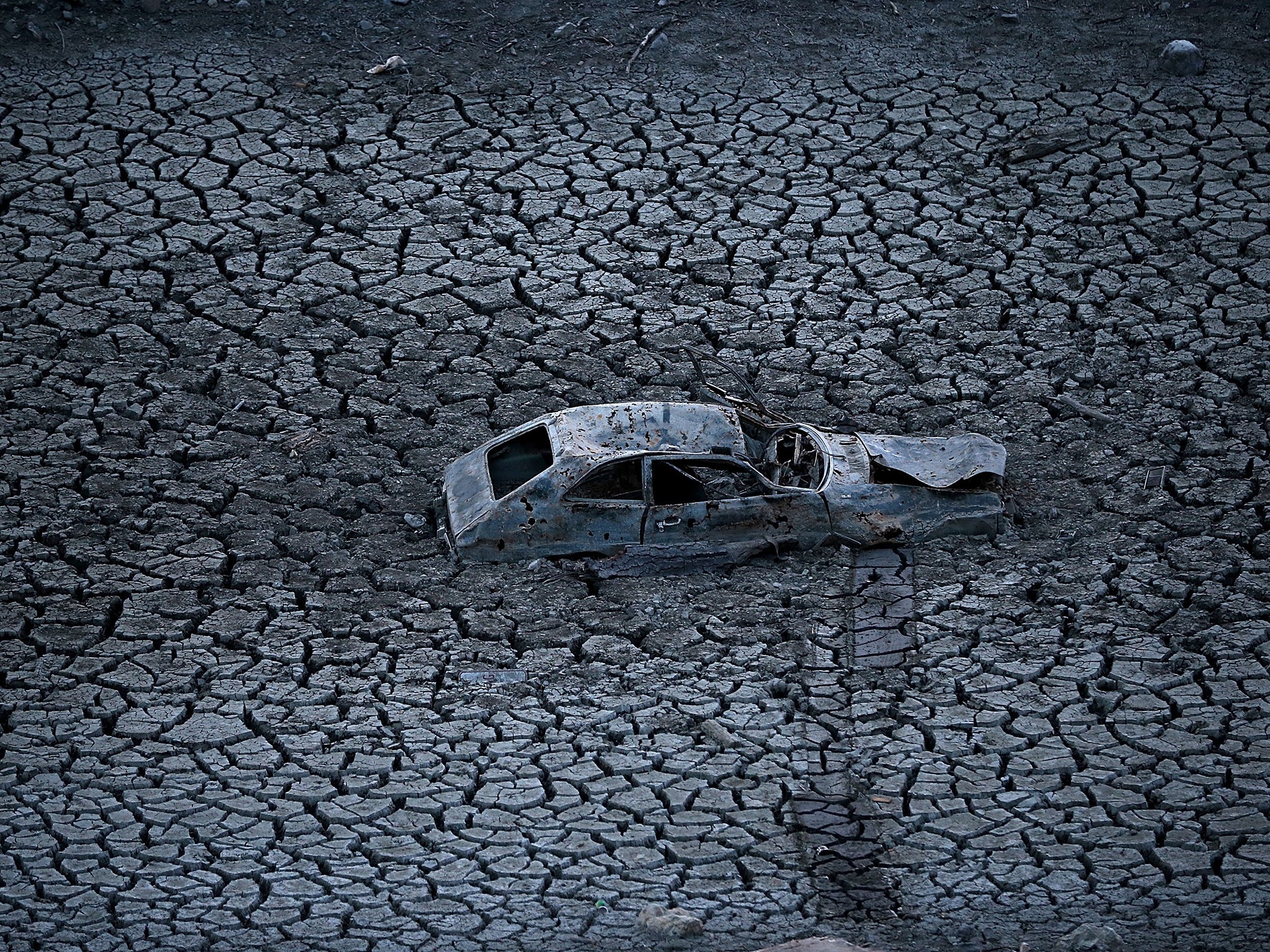In the eye of a mega-drought: Researchers warn US should prepare for 'unprecedented drought conditions' unlike anything in past 1,000 years
A great swathe of the United States is gripped by the driest spell for 400 years. Now scientists have warned that much worse is to come

Your support helps us to tell the story
From reproductive rights to climate change to Big Tech, The Independent is on the ground when the story is developing. Whether it's investigating the financials of Elon Musk's pro-Trump PAC or producing our latest documentary, 'The A Word', which shines a light on the American women fighting for reproductive rights, we know how important it is to parse out the facts from the messaging.
At such a critical moment in US history, we need reporters on the ground. Your donation allows us to keep sending journalists to speak to both sides of the story.
The Independent is trusted by Americans across the entire political spectrum. And unlike many other quality news outlets, we choose not to lock Americans out of our reporting and analysis with paywalls. We believe quality journalism should be available to everyone, paid for by those who can afford it.
Your support makes all the difference.Since the turn of this century, the US south-west has spent more than a decade in drought. Last year was the warmest on record in California, which is in the middle of its driest spell for more than 400 years. But according to a new scientific study, that’s nothing compared to what comes next.
In the paper, published by the journal Science Advances, researchers from Nasa and Columbia and Cornell universities warn that a vast swathe of the US, including the south-west states and the central plains, should prepare for “unprecedented drought conditions” unlike anything in the past 1,000 years.
Within 35 years, the region’s millennia-long natural cycle of droughts and occasional rainfall is likely to bring an end to the relative dampness of the last century. The effects of that drying, the scientists warn, would be exacerbated by man-made climate change.
“Nearly every year is going to be dry toward the end of the 21st century, compared with what we think of as normal conditions now,” said Ben Cook from Nasa’s Goddard Institute for Space Studies, the lead author of the study. “We’re going to have to think about a much drier future in western North America.”
The long-term dry conditions could devastate the region’s agricultural capability, decimating both crops and cattle herds, and sending some food prices sky-rocketing. It would directly affect more than 60 million people from San Diego to San Antonio and from Oakland to Omaha, who depend on increasingly scant water resources and on infrastructure designed during an abnormally moist 20th century.

The scientists said the effects of a mega-drought, which would be especially pronounced in desert cities such as Las Vegas and Phoenix, should be considered a slow-motion natural disaster, of a piece with earthquakes or hurricanes.
Data discovered in tree rings shows that between the ninth and the 14th centuries, the region also endured lengthy periods of intense drought, an era referred to by paleoclimatologists as the “Medieval Climate Anomaly”, which is believed to have hastened the demise of some early civilisations. But decades of dry conditions, beginning in about 2050, could be even worse, the study predicts.
Dr Jason Smerdon, a climate scientist at Columbia University’s Lamont-Doherty Earth Observatory and co-author of the study, said: “We are the first to do this kind of quantitative comparison between the projections and the distant past, and the story is a bit bleak. Even when selecting for the worst mega-drought dominated period, the 21st century projections make the [previous] mega-droughts seem like quaint walks through the Garden of Eden.”
A mega-drought would lead to major water shortages, which would cause vegetation to dry up, bringing about regular, massive wildfires in Arizona and California. But while the drought in California and its neighbouring states has grabbed recent headlines, the study suggests a far larger area would be hit, encompassing all, or parts, of Nevada, Utah, Colorado, New Mexico, Texas, Oklahoma, Kansas, Nebraska, South Dakota, Iowa, Minnesota, Missouri, Arkansas and Louisiana.
According to the study, there is a greater than 80 per cent chance of a mega-drought of 35 years or longer occurring in the US this century, unless swift and aggressive action is taken to alleviate the speed and impact of climate change, which would lower the risk. The authors said their research differed from other recent reports in its level of certainty about future droughts because they had taken into account the rise in carbon emissions.
Their conclusions were based on the rate of rising emissions and on complex climate simulations produced by 17 different computer models, which all broadly agreed on the results. The natural cycle, they found, would probably bring far less rain and snowfall to the region than in recent decades. But rising temperatures would also speed evaporation, shrinking the annual snowpack and parching soil.
This time last year, the President Barack Obama’s administration announced a $200m (£130m) drought aid package for California. But that will be of little use in combating the effects of a decades-long regional drought. “These mega-droughts during the 1100s and 1200s persisted for 20, 30, 40, 50 years at a time, and they were droughts that no one in US history has ever experienced,” Dr Cook said.
“The droughts people do know about, like the 1930s ‘dustbowl’ or the 1950s drought or even the ongoing drought in California and the south-west today – these are all naturally occurring droughts that are expected to last only a few years or perhaps a decade. Imagine instead the current California drought going on for another 20 years.”
Cook and Smerdon’s co-author Toby Ault, from the Department of Earth and Atmospheric Sciences at Cornell, said climate change increased the likelihood of a mega-drought “considerably”. Presenting the findings to reporters during the annual American Association for the Advancement of Science (AAAS) conference in San Jose, California, he said: “We’re not necessarily locked into these high levels of mega-drought risk, if we take actions to slow the effects of rising greenhouse gases on global temperatures.”
Join our commenting forum
Join thought-provoking conversations, follow other Independent readers and see their replies
Comments